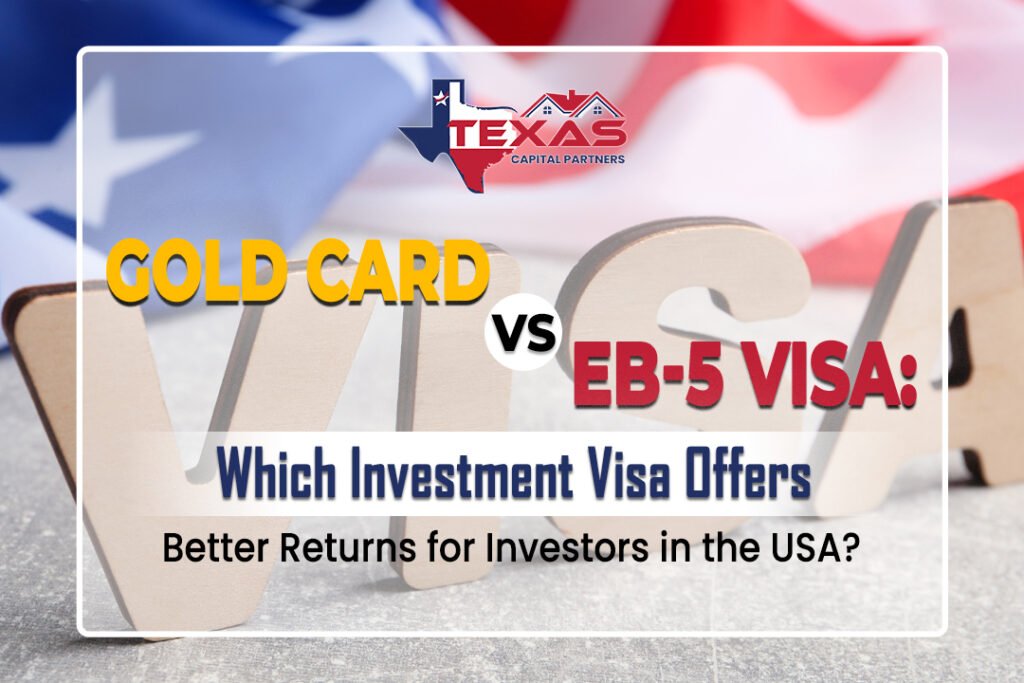For global investors seeking residency and financial growth in the United States, investment immigration programs offer a strategic pathway to international mobility and wealth expansion. Two of the most prominent options are the U.S. Gold Card (Investor Visa Program) and the EB-5 Visa. But which one provides better returns? Explore each program’s benefits, investment requirements, and long-term advantages.
Understanding the U.S. Gold Card and EB-5 Visa
What is the U.S. Gold Card?
The U.S. Gold Card refers to various investor visa programs, such as the E-2 Visa and the EB-1C Visa, that provide long-term residency options for entrepreneurs and investors. While the U.S. does not have a formal “Gold Card” like other countries, these visa categories offer a pathway for investors to establish businesses and secure residency.
What is the EB-5 Visa?
The EB-5 Immigrant Investor Program is a U.S.-based investment visa that grants foreign investors and their families a path to a Green Card (permanent residency) in exchange for investing in job-creating businesses within the United States. The minimum required investment is $800,000 in a Targeted Employment Area (TEA) or $1,050,000 in other areas.
Investment Comparison: U.S. Gold Card vs. EB-5
| Feature | U.S. Gold Card (E-2, EB-1C) | EB-5 Visa |
|---|---|---|
| Minimum Investment | Varies (E-2: $100K+; EB-1C: Business investment) | $900K (TEA) / $1.8M (non-TEA) |
| Residency Duration | E-2: Renewable indefinitely; EB-1C: Green Card pathway | Conditional Green Card (2 years), then permanent residency |
| Pathway to Citizenship | Possible via EB-1C (Green Card route) | Yes, after 5 years of residency |
| Business & Work Flexibility | E-2 requires active business; EB-1C allows executive-level employment | Limited—must invest in an EB-5-approved business that creates jobs |
| Family Inclusion | Yes, includes dependents | Yes, includes spouse and children under 21 |
| Return on Investment (ROI) | Direct—profits from business ventures | Indirect—returns depend on the success of the investment project |
| Processing Time | E-2: 2-6 months; EB-1C: 1-2 years | Can take 2-5+ years due to visa backlogs |
| Tax Benefits | Subject to U.S. taxation | Subject to U.S. taxation on global income |
Which Investment Visa Offers Better Returns in the USA?
Financial Returns
- U.S. Gold Card programs (E-2, EB-1C) involve business investments, allowing investors to directly profit from their capital.
- EB-5 investments typically involve funding government-approved projects, which may provide lower financial ROI but a guaranteed residency pathway.
Residency and Citizenship Benefits
- U.S. Gold Card options offer flexibility with business-oriented residency rights.
- EB-5 Visa leads to U.S. permanent residency and potential citizenship after five years.
Risk Factors
- U.S. Gold Card investments require active business involvement and may be affected by market conditions.
- EB-5 investments are tied to job creation requirements and visa backlog risks.
Conclusion: Which Option is Right for You?
For investors seeking higher financial returns with business flexibility, the U.S. Gold Card (E-2, EB-1C) may be the better choice. However, for those looking for U.S. residency and a path to citizenship, the EB-5 Visa is a strong option despite its longer processing times and structured investment requirements.
At Texas Capital Partner, we help investors evaluate the best immigration and investment strategies to meet their financial and residency goals in the United States. Contact us today to explore your U.S. Gold Card or EB-5 Visa options!



